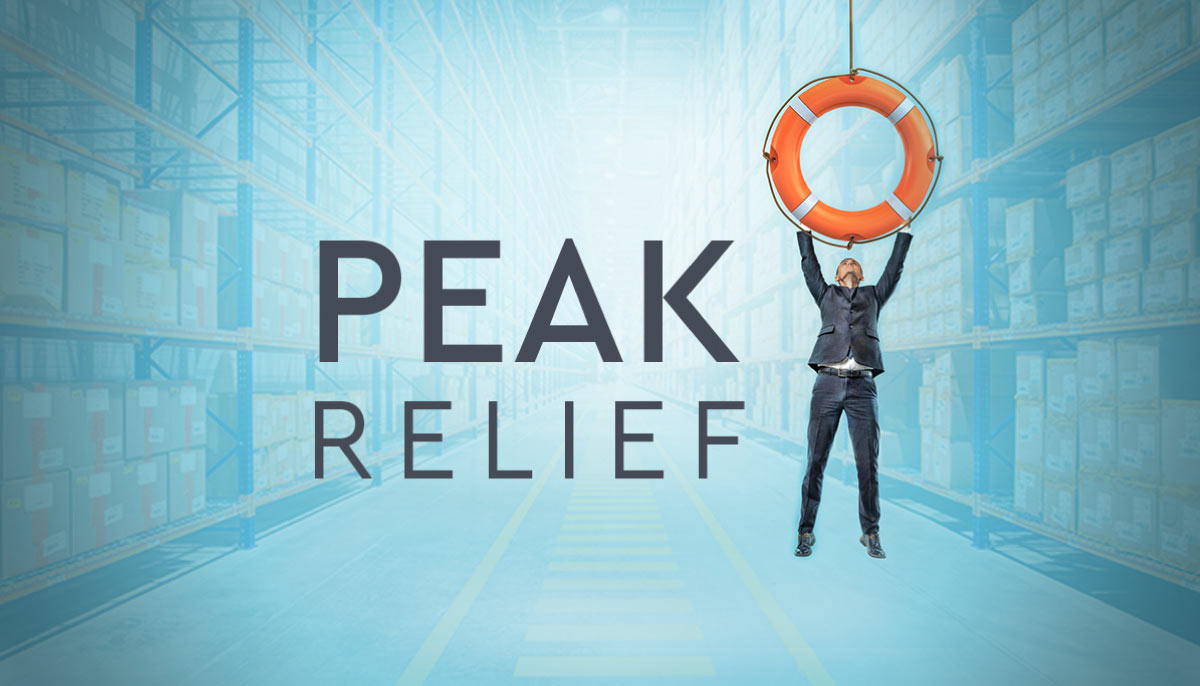
Peak Relief with Fulfillment-as-a-Service
Now that you have finally recovered from 2018’s tumultuous holiday peak season, guess what… it’s time to start preparing for peak season 2019!
Peak Success
Peak season 2018 was another record breaking year for eCommerce with:
- 19.2% growth during the Cyber 5 (Thanksgiving Day through Cyber Monday), totaling $22.55 billion, up from $18.9 billion in 2017
- 17.4% increase over 2017 in total holiday peak period growth (November through December)
- 16.9% increase in eCommerce penetration of total retail sales for the total holiday peak period, up from 15.2% in 2017
For PFS, 2018 marked our busiest and most successful peak season yet. During our yearly Peak Performance Program, we evaluate success and look at areas to improve our solutions for the next peak season. This year it became clear that our alternative fulfillment services, what we’re calling Fulfillment-as-a-Service or FaaS, are a major contributor to the success we’re experiencing.
Flexibility & Affordability
From the continued rapid growth of eCommerce, to increasingly challenging customer expectations, to rising fulfillment center and labor costs, there is a need for fulfillment solutions that provide more flexibility and operational efficiency simultaneously. FaaS is the response to this need. PFS’s FaaS offerings include pop-up distribution centers, mall-based fulfillment solutions, and cloud-enabled pick carts for use within any fulfillment center. Our primary goal with FaaS is to ensure clients can remain competitive in the eCommerce market by delivering on increasing consumer expectations.
Traditional fulfillment models require detailed, highly accurate volume projections that are often challenging for retailers, especially SMB (small to medium sized business) retailers, to gauge. SMB retailers require much more flexibility when implementing a new eCommerce solution. FaaS replaces traditional fulfillment requirements with flexible offerings that allow companies to compete without breaking the bank on large capital expenditures. SMB businesses, as well as many established brands, are recognizing the benefits of FaaS offerings. For example, short-term pop-up distribution centers are growing at or above the 15% run rate of eCommerce overall.
Peak Relief with FaaS
Here are three ways FaaS can bring relief to your operations during peak:
 Get product closer to the customer: For one client, PFS shipped 10+% of all 2018 peak volume from pop-up DCs, relieving the primary DC of this added volume while enabling faster delivery to customers with in-region fulfillment. Mall-based fulfillment solutions also enable retailers to ship-from-store, which allows them to compete with same-day and next day shipping services.
Get product closer to the customer: For one client, PFS shipped 10+% of all 2018 peak volume from pop-up DCs, relieving the primary DC of this added volume while enabling faster delivery to customers with in-region fulfillment. Mall-based fulfillment solutions also enable retailers to ship-from-store, which allows them to compete with same-day and next day shipping services.- Improve pick productivity: A company’s picking solution has potential to make or break them during crunch time. PFS’s proprietary pick carts combine advanced technology with process ingenuity to deliver a cost effective, highly flexible solution. With the implementation of these new lighted pick carts, PFS saw an increase in pick productivity of 60% for one client during peak week 2018.
- Combat labor challenges: The eCommerce industry will require an additional 226,000 warehouse workers in 2019 to keep pace with increasing eCommerce demand.1 Labor is a critical component to ensuring a successful peak operation, unfortunately, it is also one of the hardest aspects to manage. By spreading operations across regions through pop-up DCs, retailers can broaden their labor pool. Omni-channel enablement through FaaS solutions, such as PFS’s mall-based fulfillment, also allow you to fulfill orders quicker without affecting your store operations or requiring incremental staffing.
Get in contact with a PFS team member today to learn how Fulfillment-as-a-Service can help make Peak 2019 your best year yet!
[1] O’Brien, Mike, The Customer Expectation Chase Continues, MCM Outlook 2019, Multichannel Merchant


